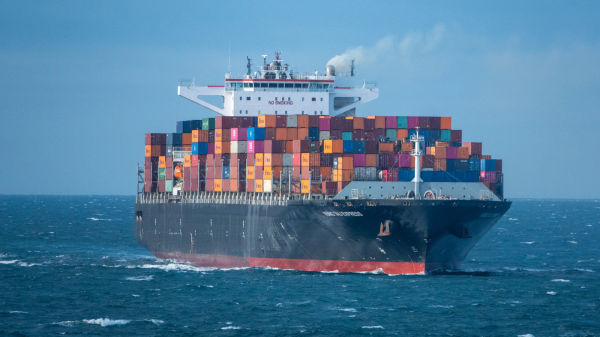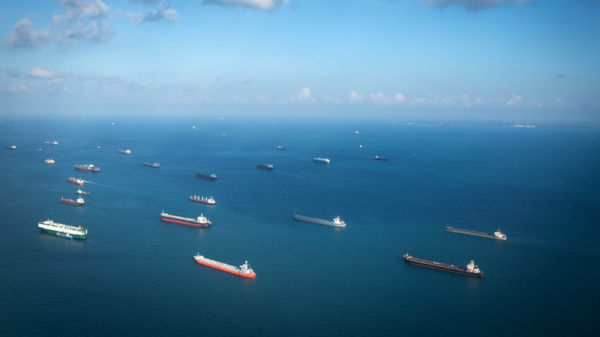When you think of a container ship, its sheer size is probably what first comes to mind. You might even wonder how massive container ship engines are made. According to Dynamic Port Agencies, cargo ships move more than 90% of the products and goods produced across the earth. This is despite risks like attacks from pirates and rough conditions severe enough to knock individual containers off the ship. There are also concerns about certain types of cargo, that have some questioning, are electric vehicles causing cargo ships to catch fire? But contrary to popular belief, these ocean goliaths are capable of some surprising speeds, considering they are some of the biggest ships the world has ever seen.
Advertisement
The average container vessel maintains around 24 knots (27.6-miles per hour). In terms of the fastest examples, the Sea-Land Galloway, a ship with a 41,127-ton capacity set a Guinness World Record in 1972, with a cruising rate of 33 knots (nearly 38-miles per hour). Back in 2008, shipping giant Maersk’s “B” ships were documented cruising at 29.2 knots by the Clarkson Ship Register as reported by FreightWaves.com. However, the economic instability of the late 2000s, brought about the concept of slow steaming, which is still used today and involves a slower cruising speed to reduce fuel usage and emissions.
Why don’t cargo ships travel faster?
Most container ships don’t exceed 24 knots even if they have the capability. In fact, many vessels cruise at rates between 20 and 30% slower than their maximum. This is partly due to fuel economy, which shipping outfits must carefully consider for each route in order to save money. While traveling faster would get the onboard goods to port in less time, it would also require more fuel. For example, a ship loaded with around 8,000 TEU (a common measurement for volume), could save around 33% of fuel a day, by cruising at 21 knots instead of 24.
Advertisement
A reduction in emissions is also another cause for shipping companies to slow the travel speed of their cargo vessels. The idea behind slow steaming, which is traveling between 18 and 20 knots, is that by lowering the load on the ship’s engine, it’ll emit fewer pollutants into the air. According to one study published by ScienceDirect.coma mere 10% slower cruising speed could result in as much as 19% less harmful emissions.
While the ocean is vast, there are crowded routes with elevated levels of marine vessels, making higher speeds a safety issue. The English Channel for example, see’s upwards of 500 ships a day in its waters. Maneuverability at greater speeds would be hindered and even at normal cruising knots, it can take a container ship upwards of a mile to completely slow to a halt.
Advertisement









